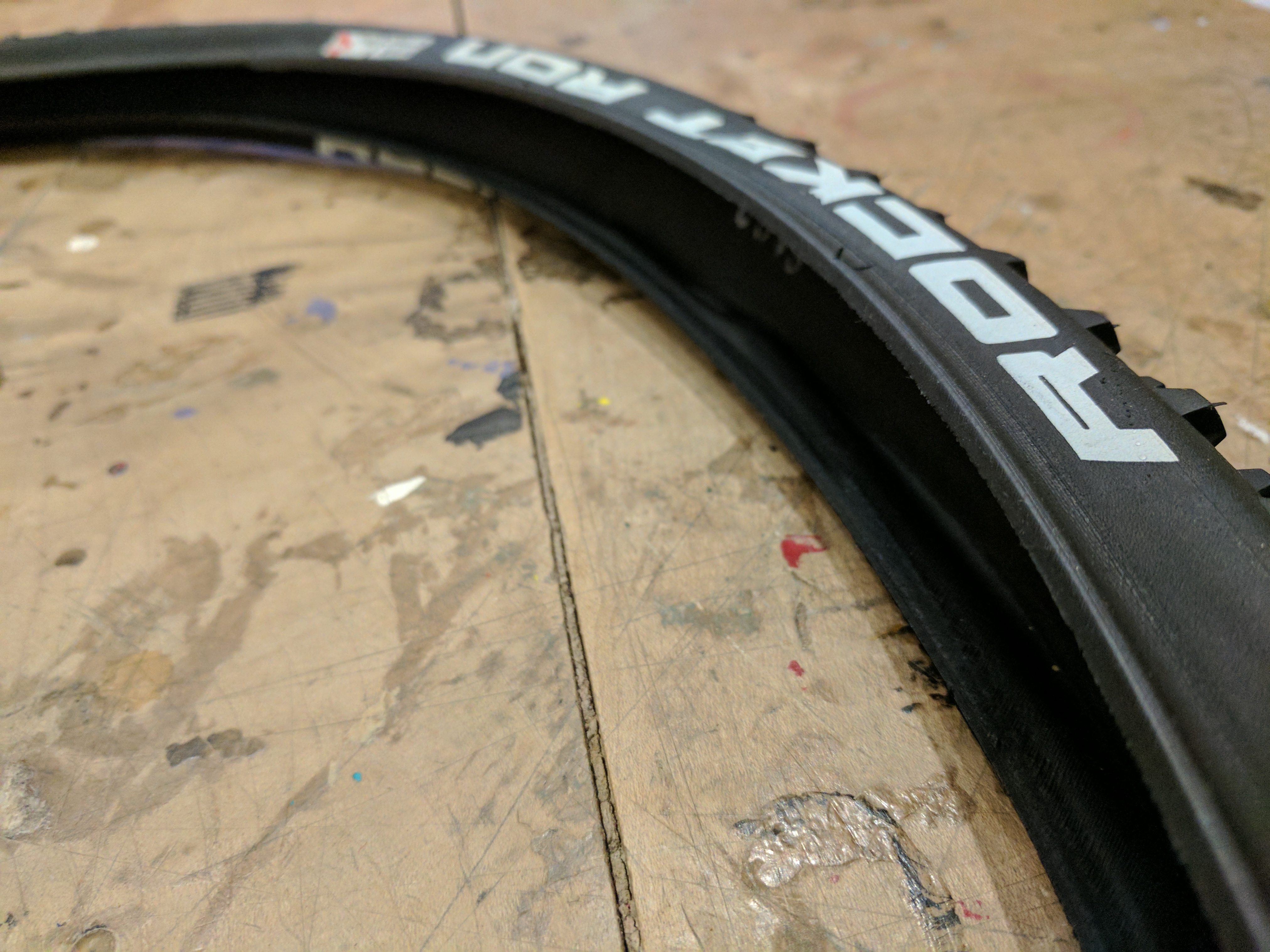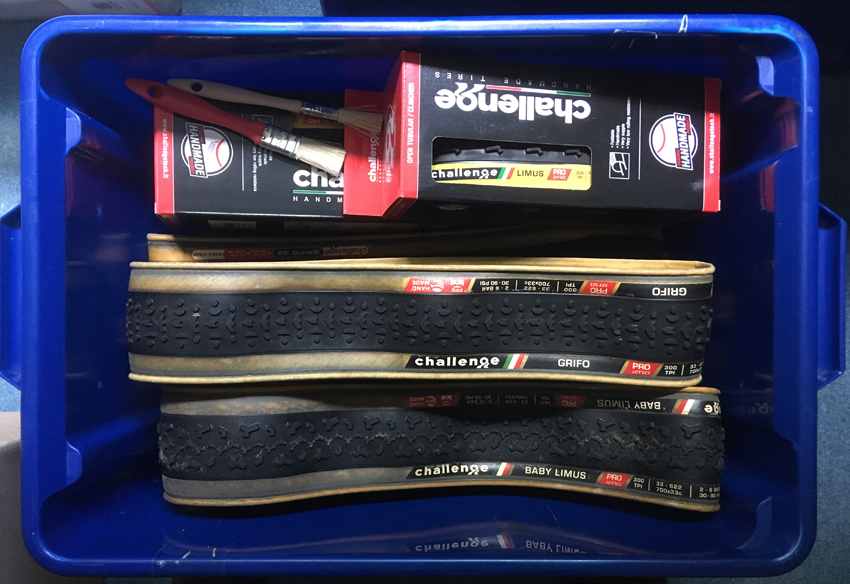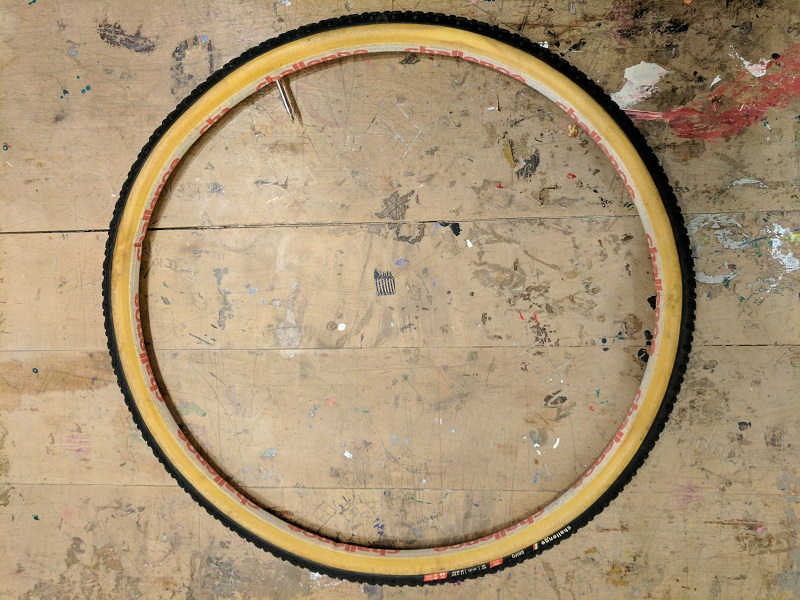ENTHUSIASTIC riders from all disciplines of cycling usually develop an interest in tyre selection, but the importance of understanding, and riding, the correct combination of tyre and tyre pressures in cyclocross cannot be overstated. It can make a significant difference to your lap times, your overall positions and, perhaps, how many times you hit the ground!
Regardless of your level of riding, if you race or ride for pleasure, you should ideally have an at least basic understanding of the different tyre systems and the behaviour of different tread patterns in various conditions.
Tubular versus Clincher versus Tubeless
Until recently, the tyre system discussion was a two horse race; clinchers (also known as open tyres) and tubular tyres (also known as tubs) were the only option and for many clinchers were for training and tubs were for racing.
Now, with the addition of tubeLESS tyres there is an additional option to choose from but don't worry, variety is the spice of life (as they say).
Clinchers
This is the traditional tyre system we all know, the tyre is attached to the wheel by a bead on the tyre that interlocks with a flange / lip on a wheel. The inner tube is separate. This tyre system does not need glue and is very easy to set up.
Although largely trouble-free, because of the use of an inner tube, this system can be prone to snake bite or pinch flats when running at low pressures generally needed for muddy cyclocross. This occurs when the rider hits a stone or root and the tube in pinched between the tyre and the rim. This means running pressures need to be higher and higher pressures mean less grip. This is a disadvantage in muddier conditions.
 Above: A standard clincher tyre.
Above: A standard clincher tyre.
The use of latex inner tubes gives a more supple ride improving grip and giving slightly more puncture resistance, but latex inner tubes, although lightweight, can be temperamental and not particularly durable. Chances of punctures from thorns and sharp objects are relatively similar with each system and the impact on your ride can be reduced in all cases with the use of a good sealant inside the tube.
The biggest advantage of clinchers is the lower cost and the ease of which punctures can be fixed and tyres fitted. They are like any other tyre using an inner tube, if the tube is damaged, simply buy a new one and ride on! To slightly confuse you - Challenge refer to their range of high quality clinchers as 'open tubulars' (shown in main image at top of page).

Above: Once you start building your 'cross tyre collection you will have a variety of tread patterns and grip levels.
.....
Support our partners
BUY CYCLOCROSS TYRES - Challenge Schwalbe Vittoria & more
CLICK HERE
.....
Clincher Tubeless
This is a variation of the standard clincher system (above), the tyre attaches to the wheel in the same way but the big difference is the tyre is inflated without the use of an inner tube meaning pressures can be lower as the risk is pinch flats all but disappears.
Remember less pressure = more grip!
Tubeless technology and usage has been gaining traction for about the past decade but some seasoned cyclocross racers are reluctant to be converted by the system's idiosyncrasies. The system is a little harder to fit than standard clinchers, the bead needs to be seated without an inner tube, and in order to do this easily you would benefit from investing in a flash pump. A flash pump (below) delivers a large volume of air in one shot almost 'exploding' the bead of the tyre in to the rim.
BUY AN AIRSHOT INFLATOR
The tyres work better at lower pressures but when they are subjected to heavy cornering can burp air, which is fine on a leisure or training ride as a pocket pump can soon reinflate them but during a race it can completely ruin your day hence many racers are hesitant.
Tubulars
The choice of professional racers!
The most obvious difference between a tubular tyres and clinchers tyres is how the tyre is attached to the wheel. Tubular tyres are 'stuck' to the wheel, almost always with glue. This means that they can only be used with a tubular-specific wheelset - and tubular rims are generally lighter than most designed for the clincher system.

Unlike a clincher, a tubular tyre is sewn up on the side that makes contact with the wheel and the inner tube to a tubular tyre is contained within the tyre itself. Tubulars are generally more expensive and fewer brands manufacture them but once you get serious you'll soon be considering them.
Tubulars perform supremely well at lower pressures, they are the most supple of the three options and provide the most grip for cornering meaning you can retain your speed when things get tight.
They can also be injected with sealant making them good with punctures and they hold up extremely well as against pinch flats.
There are disadvantages to tubulars, fitting them has a reputation for being unnecessarily difficult and time consuming and repairs are certainly not easy. That said, with preparation, fitting can be pretty straightforward and repairs – well repairs are a pain, but sealant still takes most of the pain away.
We will put a longer user guide the technical aspects of fitting these systems and go into more detail on tread patterns and tyre pressures soon.
Subscribe to our newsletter at the foot of the Cyclocrossrider front page to stay up to date.
So – to answer the question "which tyres should I ride…?" It's down to many different factors and a decision you need to make yourself after taking as much advice as you can. Many people also use trial and error and will eventually find what suits them on different courses. Certainly for the newcomer, a pair of lightweight clincher tyres on a decent wheelset will be adequate.
WHERE TO BUY CYCLOCROSS TYRES
